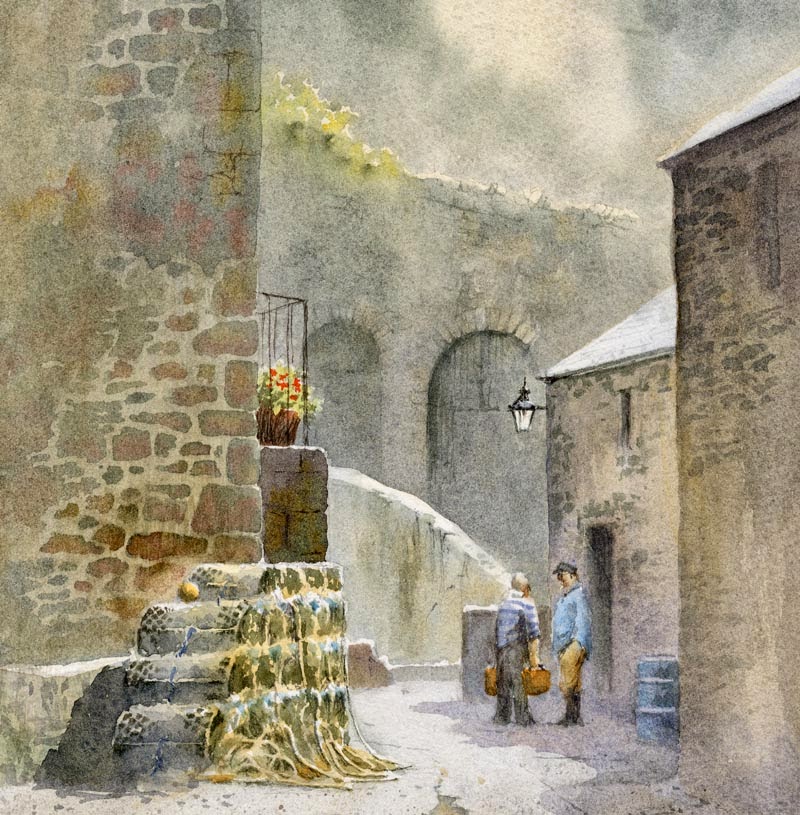Do you ever look through your sketches and sometimes think ‘What on earth is that?’ You simply can’t remember what it was and thought at the time you had enough detail to work from. I sometimes deliberately make a sketch a little obscure, although more often I make certain parts of the sketch less definite, with perhaps hardly any detail, or maybe make it more abstract.

In this rough pencil sketch, which I did on my recent visit to the Scottish Highlands, my aim was to create a simple record of an interesting composition for some future painting. I could easily see many features on the distant hill and shore, and I could see so much more around the houses, but I was only interested in the basic composition, a few shapes and a couple of colours. This method makes it easier for me to impose my own atmosphere and colouring on the scene, and not painstakingly follow every scrap of detail and colour in the actual scene.
I’ve sketched hundreds of Highland scenes, so I’m familiar with many of the standard colours. When I come across prominent or new colours that have impact, such as the strips of dull pink pebbles and orangey yellow weed as in this scene, I make a note, as that’s the sort of thing that’s so easy to forget. There were a few small boats on the other side of the dark concrete pier, so I will probably add one or two of those in just below the buildings when I do the painting, and maybe add some figures and gulls for life, otherwise the composition is fine as it stands – the far hill will dissolve into a light mist or squall. This approach to sketching will help you simplify your paintings and impart more impact.
The Highlands were at their most beautiful, but sadly the onset of vast wind turbines, hundreds of them, is now encroaching into the classic Highland scenery itself, such industrialisation being completely alien to the natural environment, but making enormous profits for energy companies and landowners. As more turbines come on-stream the grid becomes less stable, and there is strong evidence that blackouts have already started because of this. For this to happen in one of the most beautiful countries in the world it is unforgiveable. The Scottish tourist organisation recognise this beauty and implore visitors to help keep it this way, yet this is at odds with their lack of protest against this industrialisation, and I take every opportunity to tell them so. If you want know more, visit Scotland Against Spin


 The sun beat down every day on our recent landscape course at Builth Wells, although happily we did have some welcome fluffy white clouds at times for variation. The ideal spot was down by the river running through the hotel grounds, where several students took the opportunity to dangle their feet in the water while they sketched. In the photo Jenny is giving advice as they paint a mixture of delightful cascades and still water punctuated with stunning colour reflections. Make the most of this lovely sketching weather.
The sun beat down every day on our recent landscape course at Builth Wells, although happily we did have some welcome fluffy white clouds at times for variation. The ideal spot was down by the river running through the hotel grounds, where several students took the opportunity to dangle their feet in the water while they sketched. In the photo Jenny is giving advice as they paint a mixture of delightful cascades and still water punctuated with stunning colour reflections. Make the most of this lovely sketching weather.

